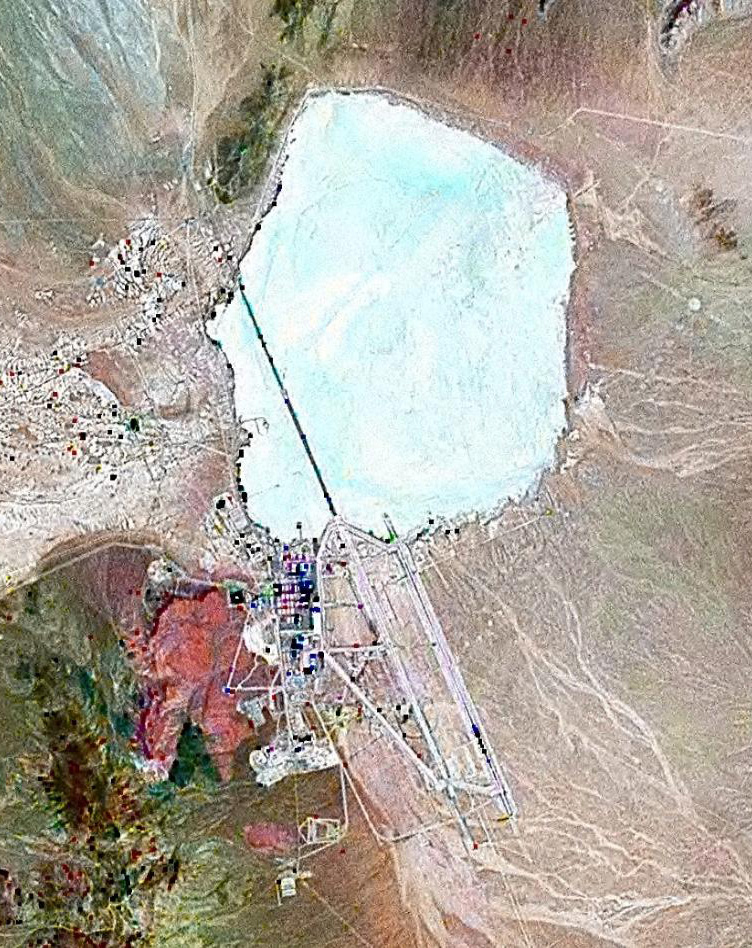How the Storm Area 51 phenomenon could be an alien benefit to family that once owned the land

Joe Sheahan neither condones nor condemns the Facebook page that (jokingly) suggests people gather near the Nevada Test and Training Range in Lincoln County and try to walk en masse into the restricted area. The idea is to “see them aliens” supposedly hidden at the secret base known as Area 51.
“In a way, the government helped perpetuate that,” Sheahan says. “Whether there is (an ET or flying saucer at Area 51) or there isn’t, I don’t know. I’m not the one to ask. At debriefings I had, no one showed me one. But I fully understand the interest in the place. It’s been hidden behind a black veil for many, many years.”
Veiled from view for most of the world, yes. But not from Joe Sheahan and the Sheahan family. They actually lived at Area 51 for generations. That is, until the Air Force took their land in 2015 in the name of national security. Now, the “Storm Area 51” social media sensation could provide ammunition in the Sheahans' court fight against the government — which has yet to pay the Sheahans for their property.
Since Ulysses Grant occupied the White House, the Sheahans owned and operated Groom Mine, a lead and silver mine in the hills overlooking Nevada’s Groom Lake. Today, the dry lakebed is the site of the oxymoronically secret, yet world famous, Area 51.
There was no Area 51 when the Sheahan family began working the Groom Mine in the 1880s. It wasn’t until the mid-1950s that secret work began at Groom Lake on stealthy spy planes like the SR-71. Groom Lake was an ideal spot for top-secret testing. It was remote, surrounded by mountain ranges and situated at the edge of the Nevada Proving Grounds in an area of the atomic test site known as Area 51.
Though the Area 51 moniker stuck, the site has also been known in military circles as “The Box”, “The Ranch”, and “Dreamland”, after the installation’s radio call sign. In 1989, rumors surfaced that crashed or recovered alien spacecraft were being studied there.
For decades the Sheahans and the military peacefully coexisted, though the relationship was sometimes rocky. The mill at Groom Mine mysteriously exploded in 1954, and the Sheahans blamed an errant bomb or dropped fuel tank from a military jet. It ended production at the mine. The Air Force denied responsibility for the blast.
In 2015, the Air Force decided it could no longer allow civilian ownership of land in its test area. It offered the Sheahans $2.4 million for the 400-acre Groom Mine site. The 15 Sheahan claimholders declined. The Air Force upped its offer to $5.2 million: take-it-or-leave-it.
For the Sheahan family, it was about more than money. The mine was a place where many of them had grown up -- where kids and adults from various branches of the family spent holidays, celebrated birthdays, and just generally bonded together.
“When I was growing up, other families went to Disneyland,” Joe Sheahan remembers, “We went to the mine.”
The Sheahans weren’t going to give up 130-years of family history, literally tons of mining equipment and several lifetimes of memories for the sum offered by the Air Force. Again, they declined the offer.
So, on September 10, 2015, the Air Force simply took the land through eminent domain.
Though the Air Force got its mine, the Sheahans didn’t want to get the shaft. They are battling the military in a federal lawsuit over the amount of compensation they should get for having a parcel taken from them that is teeming with family — and Nevada — history.
And that is where the Storm Area 51 movement, though unforeseen and unsolicited by the Sheahan family, could reflect beneficially on their case.
Putting a price on the unobtainable
The Sheahans and the government are at wildly opposing ends of the spectrum when it comes to their evaluations of how much the Groom Mine property is worth. Though it offered $5.2 million at one time, the government’s estimate of the mine site’s actual value is $330,000. The Sheahans’ projected price tag? Perhaps more than 200-times the government’s figure: something between $42-and-112 million.
That jaw-dropping difference stems from the “commercial value” the Sheahans place on their former property, one that is almost entirely a function of the land’s proximity to Area 51.
“That is how we value property,” says Autumn Waters, one of the Sheahan’s lawyers. “And it has tremendous value because of that. Because it’s the only private property in the entire world that has a clear, unobstructed view of Area 51. And as this “Storm Area 51” phenomenon has occurred, it only confirms what we already knew.”
Michael Schneider, another Sheahan family attorney, notes that more than two million people have signed up to join the march into Area 51. How many will actually arrive is unknown, though Lincoln County officials are expecting thousands to gather there on September 20, for a celebration at least, and the few hotels in the area were quickly filling up.
“Two million people, quote, ‘going’.” Schneider says. “And that shows a demand and a willingness to get off the couch and go do something. So, yes, that equates to value for a property that offers a view of what everyone says they want to go see.”
And that value, the family argues, would be in the multi-millions of dollars if the Sheahans had decided, when they owned the property, to open up the site to tourists to view the mine — and the secret base next door — for a fee. Under a scenario outlined by several experts hired by the Sheahans, a tour operator could have developed an attraction not unlike the Grand Canyon Skywalk that would accommodate 150-324 visitors a day. 54,000-95,000 people annually would pay $200-$500 apiece for admission to the Groom Mine ($750 for an overnight stay) and a direct view down on Area 51 from six to seven miles away.
Disneyland at Dreamland?
In documents filed in the federal case on the issue of the Sheahans' compensation, government lawyers say they do not seek to exclude every possible tourist use as evidence in the case — but they also say the estimates made by four of the Sheahans' experts’ should be dismissed as “speculative”. The government labeled the use of the property proposed by the Sheahan’s litigation team a “fictional” scenario under which the Sheahans say they would sell their land to an investor who would immediately contract with a Las Vegas tour operator to “develop ‘Area 51-Disneyland’ on our land and pay us millions of dollars”.
Government lawyers assert that the figures used by the Sheahans’ experts are dubious and not supported by evidence. They also say the Sheahans’ experts have glossed over or downplayed other factors that make their theoretical tourist attraction impractical. Those factors include the presence of residual lead and arsenic from the mining process. There may also be issues associated with vetting visitors to the site and making sure no visitors could take pictures of the base at Area 51, photography of which is prohibited by federal law.
The government asks the court to exclude the Sheahans' calculations of the value of property based on the four expert opinions as “hypothetical, improbable and inadmissible.”
Of course, any tourism scenario is theoretical now that the military owns the land, but the value of the property, the Sheahan lawyers say, is predicated on its worth at the time of taking — when the Sheahans had full rights to their property and could have charged admission to it.
The Sheahans’ lawyers say the recent “Storm Area 51” publicity and internet activity only bolsters their experts’ opinions that public demand to see the secret base is vast and global.
“It actually disproves the government’s case,” says Autumn Waters. “The government’s position has been: no one really cares, no one wants to see, no one is interested in Area 51 anymore. So, if anything, it lets both sides know what the true interest is, and that interest is extremely high.”
Department of Justice spokesperson Peter Carr declined comment for this story, citing the department’s policy of not commenting on pending litigation. However, the government’s court motion to exclude the Sheahans' experts’ valuation evidence, which outlines the government’s position, can be read below.
The judge in the case has not yet decided whether to exclude the Sheahan’s experts opinions in the value analysis, nor has she decided whether to appoint a three-person panel rather than empanel a jury to hear the case. The Sheahans have asked for a jury trial and are hoping for a decision soon.
Govt Motion Groom Value by Jon Ralston on Scribd
